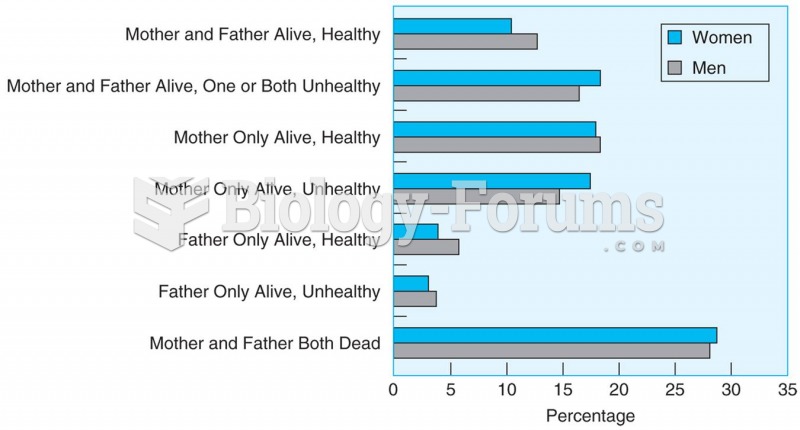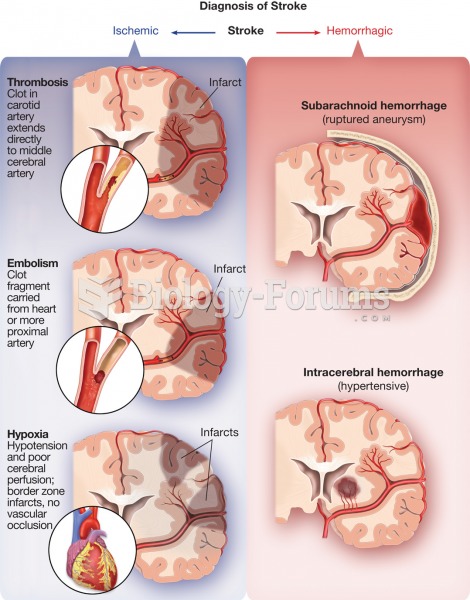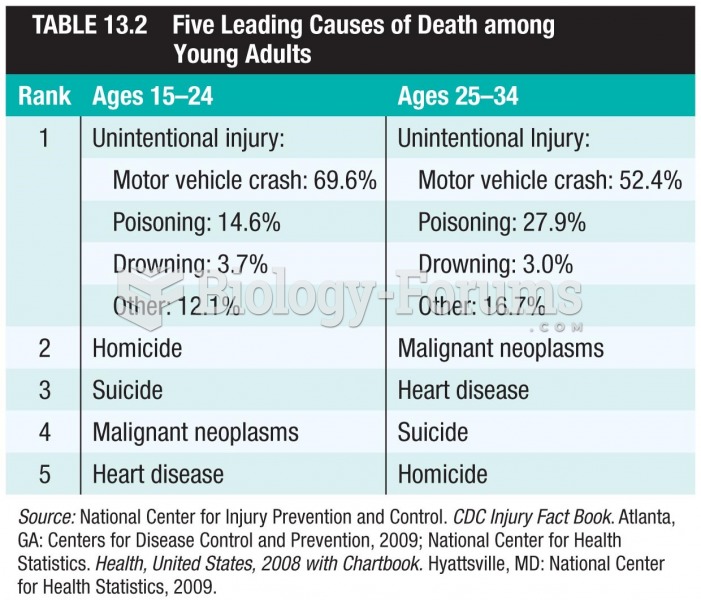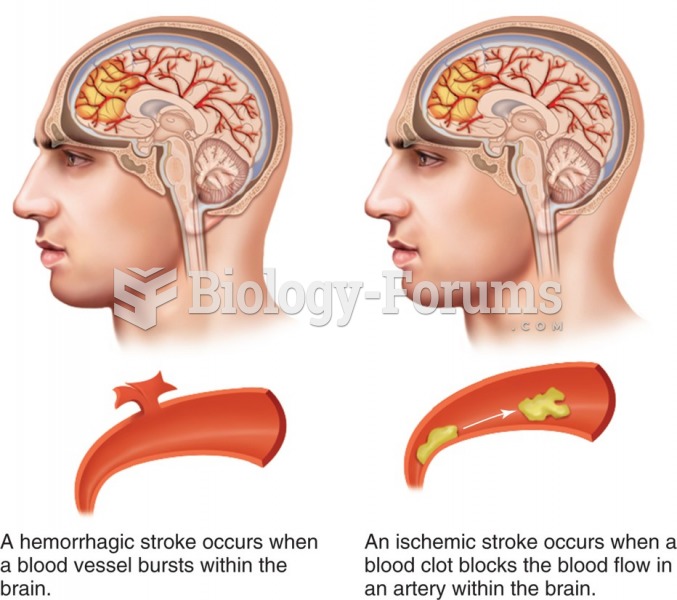|
|
|
Malaria was not eliminated in the United States until 1951. The term eliminated means that no new cases arise in a country for 3 years.
About 60% of newborn infants in the United States are jaundiced; that is, they look yellow. Kernicterus is a form of brain damage caused by excessive jaundice. When babies begin to be affected by excessive jaundice and begin to have brain damage, they become excessively lethargic.
The training of an anesthesiologist typically requires four years of college, 4 years of medical school, 1 year of internship, and 3 years of residency.
The B-complex vitamins and vitamin C are not stored in the body and must be replaced each day.
Bacteria have flourished on the earth for over three billion years. They were the first life forms on the planet.
 The tone of the nurse-patient introduction sets the stage for the patient interview and patient care
The tone of the nurse-patient introduction sets the stage for the patient interview and patient care
 About 78% of middle-aged adults (aged 40–59) have at least one living parent, and for over a third ...
About 78% of middle-aged adults (aged 40–59) have at least one living parent, and for over a third ...





